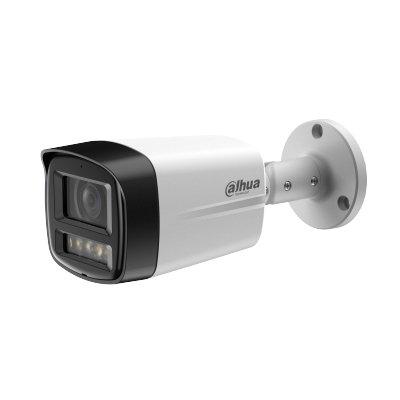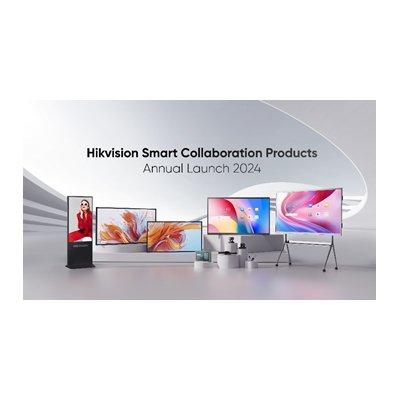Existing CCTV and video monitoring systems are already working well to reduce retail shrinkage and are now being extended to help keep stores ‘COVID Safe’, found a new retail sector study of 111 high street retailers based in the UK, US, Sweden and Norway, carried out by Video Security as a Service (VSaaS) provider AVA Security in March 2021.
An array of insights into what value physical retailers’ existing video security systems are detailed in the 15 pages Ava Security retail sector video security trends report 2021, published this week.
Video security systems
The research revealed that the biggest loss prevention gains from the use of video monitoring in stores were in shoplifting where 58% of retail sector security decision-makers recorded significant reductions in losses from shoplifting as a result of video security and 9% went further to reveal that their video security systems had completely eliminated shoplifting.
Nearly half (46%) of retailers reported major reductions in losses linked to vandalism of property
Over half (54%) confirmed that their video systems were significantly reducing theft or fraud by staff and contractors. Exactly half reported that in-store CCTV systems were significantly reducing losses from slip and fall insurance claims and 13% confirmed that their video systems had eliminated losses from fraudulent slip and fall claims. Nearly half (46%) of retailers reported major reductions in losses linked to vandalism of property had been achieved through the use of video monitoring and recording.
Video security systems
One in six retailers (17%) believed that vandalism of their property had been completely eliminated through the use of CCTV. And 41% recorded that ‘damage to goods by our staff’ had been reduced significantly through the use of video security.
39% of retailers reported it takes too long and proves too difficult to find relevant video sequences having uncovered a loss incident. The next most significant factor preventing further loss prevention in this study was the poor performance of their surveillance cameras in low or no light conditions. This was preventing 34% of retailers from reducing shrinkage further. Nearly a third (32%) of retailers’ claimed the fact that their video security systems’ did not offer early warning functionality (which can be provided by good quality audio analytics or video motion detection) was preventing them from reducing shrinkage further.
Video monitoring systems
The retail sector has been turning to video analytics to help reduce the risk of COVID-19 transmission
Over a quarter (26%) of retailers admitted that their video monitoring systems don’t work well for loss prevention because the cameras that were installed on-site were originally put in for a different purpose such as remote management of visual merchandising or footfall analysis.
The retail sector has been turning to video analytics to help reduce the risk of COVID-19 transmission as they open up to more customers. A total of 87% of retail sector decision-makers questioned by Ava Security saw a clear role for their video monitoring systems in supporting safe re-opening of their doors to staff and customers. Nearly half of this group (48%) had already put their existing video monitoring systems to work to help reinforce social distancing measures. A further 39% anticipated doing so over the next 12 months. This means ‘net deployment’ for this purpose was 88%.
Onsite video cameras
Not far behind was the use of thermal camera-based analytics to help run temperature checks on visitors: 39% of retailers across the four countries in the Ava study had already deployed this capability, while a further 38% predicted to do so in the next 12 months.
Only 22% of retail sector respondents had no plans to deploy temperature checking
Despite some concerns about the accuracy of these solutions, only 22% of retail sector respondents had no plans to deploy temperature checking via onsite video cameras. The US proved to be the main adopter of temperature checking in retail – with deployment levels almost three times higher than in the UK. Video systems have been adapted to help monitor shopper density levels in high footfall areas within stores. 47% of retailers have already installed this analytics capability, while a further 38% plan to do so within the next 12 months.
Facial recognition analytics
Despite the controversy associated with the deployment of facial recognition, some 30% of retailers have already deployed facial recognition analytics at the entrances to staff-only areas to enable contactless access control and a further 34% plan to do so over the next 12 months. For the 79% of all retail sector are actively considering Video Security as a Service (VSaaS) options right now. There were many criteria determining provider selection:
91% net considering VSaaS right now agreed with the statement ‘it (the VSaaS provider selected) must allow us to continue using our existing third-party cameras which we have already installed, we don’t want to rip & replace any equipment.’ The desire to hold onto existing security cameras and other equipment through the migration to VSaaS was considered a very important consideration in provider selection by 43% of retail respondents.
Video analytics capabilities
Not wasting prior investment in on-premise security systems is key to VSaaS provider success
Net 90% of retailers considering VSaaS confirmed, ‘It must allow us to view their directly attached cloud cameras alongside our third-party cameras on the same interface.’ The fact that these two factors are so important confirms that not wasting prior investment in on-premise security systems is key to VSaaS provider success.
Net 86% of retailers regarded it as important that the VSaaS it selected ‘must enable us to run the latest video analytics capabilities such as occupancy levels for social distance management (in a room), noise analytics (e.g., breaking glass, screaming, yelling, etc.), people and vehicle search, object searching and color searching.’ The fourth most important factor was the cyber security credentials of the selected VSaaS provider, net 84% confirmed that its VSaaS ‘must have very strong cyber security, including end-to-end encryption from the camera to the cloud.’
Cyber security credentials
Only marginally behind cyber security credentials came to Video Management Software functionality continuity - a net 83% of retailers specified that their selected VSaaS ‘must allow us to use our existing Video Management Software (VMS) or provide the same functionality as we get from our VMS.’ A net 82% insisted their VSaaS ‘must allow us to continue existing integration with other physical security and safety systems.
The Ava Security Retail Sector Video Security Trends Report 2021 provides a wealth of data, graphs and insight linked to how Operations, Facilities Management, Security and IT directors and managers within the retail sector in the US, Norway, Sweden and the UK, are adapting their video security systems in the wake of the pandemic.
Increased operational efficiencies
It also provides insight into how they are now preparing for the easing of lockdown restrictions
It also provides insight into how they are now preparing for the easing of lockdown restrictions. Most states across the USA have already reopened their shops but mask-wearing and social distancing recommendations are still being encouraged in stores across the US and Europe.
Vegard Aas, Head of Online Business at Ava Security, commented: “Our findings indicate that retailers, which have been enthusiastic adopters of video security to reduce well-known shrinkage sources and deliver increased operational efficiencies through remote monitoring for example, are now upgrading these systems by adding new video analytics to reduce losses further and promote COVID Safety in stores.”
Video security systems
“We are also seeing a strong interest from this sector for moving video security systems into the cloud. It makes sense because many retailers have multiple shops which their managers monitor remotely using the in-store cameras.”
“Moving video recording and management into the cloud using a VSaaS system could help ensure more efficient access and storage of key video sequences and cut capital expenditure as dedicated PCs running VMSs locally should no longer be needed in each shop in a VSaaS scenario. There are significant savings to be had and efficiencies to be derived if cloud migrations are managed correctly.”




















